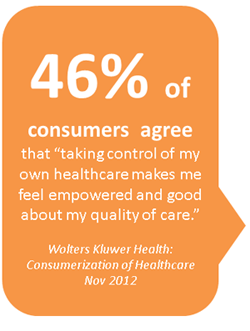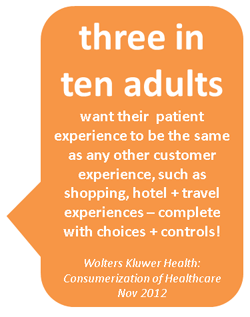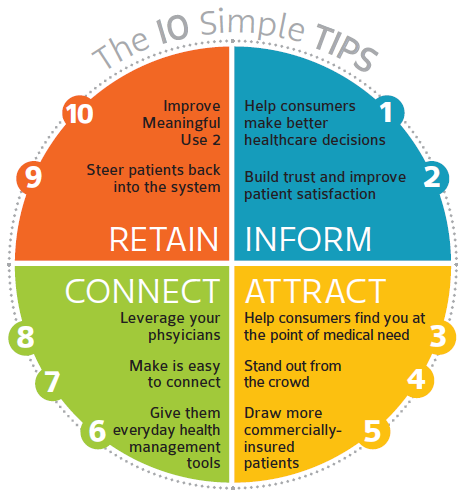Improving patient satisfaction may be at the top of your to-do list in 2013, especially as it relates directly to “Meaningful Use” and maximizing revenue. But what about engagement of the consumer? It’s key! Are you building a consumer engagement strategy? If not, you should be.

Consumer Engagement Matters
Improving patient satisfaction may be at the top of your to-do list in 2013, especially as it relates directly to “Meaningful Use” and maximizing revenue. But what about engagement of the consumer? It’s key! Are you building a consumer engagement strategy? If not, you should be.

Consumer Engagement Matters
Consumers are avoiding care – which will impact healthcare costs and future patient outcomes.
25% of consumers surveyed in Deloitte’s “2011 Survey of Health Care Consumers Global Report” say they decided not to see a doctor when sick or injured and 19% delayed or skipped treatment even when recommended by a doctor.

What Consumers Want
Research shows that people have a strong desire to be treated as consumers rather than patients. They want the healthcare providers to address access, convenience and wait times, which they universally grade as “failing.”
Patients are now consumers – and they want more convenience and control!
Despite healthcare providers referring to people as “their patients” after a single treatment, those same people view themselves much differently. They see themselves as “consumers of healthcare” with the right to be in control of their own care. “Consumers” want flexibility to consult many referral sources and want to select their providers at every stage of the care continuum. This may not always result in their staying within your hospital or health system for follow-up appointments. However, strategic consumer engagement before, during and after they become “your patient” can influence their consumer choice and help you retain them in your health system.
Consumer Engagement Drives Meaningful Use
Achieving Meaningful Use [MU] requires patients to actually use your technology tools. This is difficult. It can be helpful to think about patients as consumers who want convenience and control when engaging in their healthcare. With this in mind, you can begin to incorporate engagement tools that people can easily and conveniently access and use. The result will be engaged patients who are more satisfied.
Mobile Matters
A recent study from Pew Internet & American Life Project “Mobile Health 2012″, shows us why engaging consumers on mobile technology is important:
- 45% of American adults have a smartphone
- 25% of American adults have a tablet computer
- 52% of smartphone owners gather health information on their phones
- One-fifth of smartphone owners have a health app

To wrap up, “consumer” engagement impacts patient engagement and patient satisfaction. And that strategy should include mobile technology such as smartphones and tablets to help you reach consumers through the convenient tools they use most often.
If you like this post, please read other posts in the series on the Person-Centered HealthCare main page. And if you have a story to tell that may be a fit with our series, please comment below or email me at joan@socialmediatoday.com








